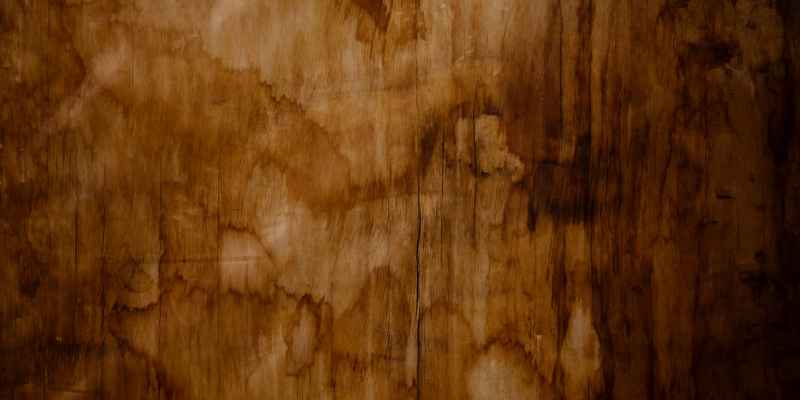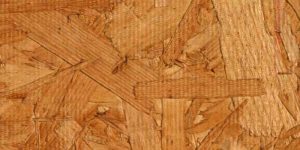Yes, you can stain plywood to enhance its appearance and protect it from damage. Staining plywood adds color and provides a layer of protection against wear and tear.
Before staining, it’s essential to properly prepare the plywood surface by sanding and cleaning it to ensure the stain adheres evenly. Choosing the right type of stain and applying it correctly will result in a beautiful and durable finish. Follow the manufacturer’s instructions for best results and consider testing the stain on a small, inconspicuous area first.
With the right tools and techniques, staining plywood can be a straightforward and rewarding DIY project.
Introduction To Staining Plywood
Staining plywood is possible, but the final outcome can be uneven due to the varying density of the wood. It is important to prepare the plywood surface properly before staining to achieve the desired results.
Why Plywood?
Myths About Staining Plywood
When staining plywood, it’s important to understand the basics. Plywood is a versatile material made from thin layers of wood veneer glued together. It’s commonly used in construction and furniture making.
Why Plywood?
- Durable and strong
- Cost-effective
- Easy to work with
Myths About Staining Plywood
- Plywood doesn’t absorb stain well
- Staining plywood will result in a blotchy finish
- Staining plywood is not durable
Choosing The Right Plywood
Staining plywood can be a tricky task, as the material tends to absorb stain unevenly. However, with proper preparation and the right techniques, it is possible to stain plywood and achieve a beautiful finish. It is important to choose the right type of plywood that is suitable for staining, such as a hardwood veneer plywood, and to follow the recommended steps for preparation and application of the stain.
With patience and attention to detail, you can transform plywood into an aesthetically pleasing and durable surface.
Choosing the right plywood is crucial for a successful staining project. Understanding the types of plywood and what to look for will ensure a quality outcome.
Types Of Plywood
What To Look For In Plywood
When selecting plywood for staining, consider these factors:
1. Grain pattern and quality
2. Smoothness of the surface
3. Thickness and durability
4. Absence of voids or patches
5. Compatibility with the chosen stain
Choose plywood that meets your project requirements for a successful staining outcome.
Preparation Steps For Staining
Before staining plywood, it’s crucial to prepare the surface to ensure a smooth and even application of the stain. This involves several key steps, including sanding the surface and thoroughly cleaning it before applying the stain.
Sanding The Surface
Start by sanding the plywood surface to create a smooth and uniform texture for the stain to adhere to. Use fine-grit sandpaper and sand in the direction of the wood grain to avoid creating any scratches or rough patches. This step helps to remove any existing finish, smooth out imperfections, and open up the wood pores to better absorb the stain.
Cleaning Before Staining
Prior to applying the stain, it’s essential to clean the sanded plywood surface to remove any dust, dirt, or debris that could interfere with the staining process. Use a tack cloth or a soft, lint-free cloth to thoroughly wipe down the surface and ensure it’s free from any particles that could affect the final appearance of the stain.
Selecting Your Stain
When it comes to selecting your stain for plywood, there are a few important considerations to keep in mind. Understanding the differences between oil-based and water-based stains, as well as color selection tips, can help you achieve the perfect finish for your plywood project.
Oil-based Vs. Water-based Stains
Oil-based stains penetrate the wood deeply and provide a rich, traditional look. They take longer to dry but offer excellent durability. On the other hand, water-based stains are more environmentally friendly, dry quickly, and emit fewer fumes. They are ideal for indoor projects and lighter woods.
Color Selection Tips
When selecting a stain color for your plywood, consider the wood’s natural hue. Light stains enhance the wood’s natural color, while dark stains can provide a dramatic contrast. It’s also essential to test the stain on a small, inconspicuous area of the plywood to ensure it achieves the desired color.
Application Techniques For A Smooth Finish
When it comes to staining plywood, achieving a smooth finish is essential for a professional-looking result. In this section, we will explore two important application techniques: using brushes versus rags and applying multiple coats. By understanding these techniques, you’ll be able to enhance the appearance of your plywood project.
Using Brushes Vs. Rags
When choosing between brushes and rags for applying stain to plywood, both options have their advantages. Let’s take a closer look at each:
| Using Brushes | Using Rags |
|---|---|
|
|
Ultimately, the choice between brushes and rags depends on the specific requirements of your project and personal preference. Some craftsmen even prefer using a combination of both techniques to achieve the desired finish.
Applying Multiple Coats
Applying multiple coats of stain can significantly enhance the depth and richness of the plywood’s color. Here are some key considerations when it comes to applying multiple coats:
- Before applying additional coats, allow the previous coat to dry completely.
- Lightly sand the dried coat with fine-grit sandpaper to ensure proper adhesion for the next layer.
- Apply subsequent coats in thin, even layers to avoid streaks or blotches.
- Consider the desired level of opacity or transparency and adjust the number of coats accordingly.
By following these steps, you can achieve a more vibrant and uniform appearance for your plywood project.
Troubleshooting Common Issues
Yes, you can stain plywood, but it may not always result in an even finish due to the variations in the wood grain. To troubleshoot this issue, consider using a wood conditioner before staining to achieve a more uniform appearance.
Additionally, sanding the plywood beforehand can help the stain penetrate more evenly.
Staining plywood can be a tricky task, especially if you’re new to it. Even experienced woodworkers can encounter problems that ruin the finish they were aiming for. In this section, we’ll discuss some common issues you may face while staining plywood and how to fix them.
Streaks And Blotches
One of the most common issues when staining plywood is streaks and blotches. These can occur due to uneven application of the stain or the wood’s natural grain pattern. To avoid this, ensure that you apply the stain evenly and wipe away any excess stain with a clean cloth.
If you’ve already applied the stain and noticed streaks or blotches, don’t worry. You can fix this by sanding down the affected area and reapplying the stain. Alternatively, you can use a wood conditioner before staining to help even out the stain’s absorption.
Fixing Uneven Stain
Uneven staining can occur when the wood absorbs the stain at different rates. This can be due to the wood’s natural grain pattern or if there are areas on the wood that are more porous than others. To fix this issue, you can sand down the stained surface and reapply the stain evenly.
Another option is to apply a gel stain. Gel stains are thicker than traditional stains and sit on top of the wood’s surface, making it easier to achieve an even finish. However, keep in mind that gel stains may not penetrate the wood’s surface as deeply as traditional stains, so it may not be as durable in the long run.
In Conclusion
Staining plywood can be challenging, but with the right techniques and tools, you can achieve a beautiful finish. Remember to always apply the stain evenly and wipe away any excess to avoid streaks and blotches. If you encounter any issues, don’t be afraid to sand down the affected area and try again.
Protecting Your Finished Project

Protecting your finished project is essential to ensure the longevity and durability of your stained plywood. Once you have achieved the desired color and finish, it’s important to apply top coats and sealants to safeguard the wood from damage and wear. Additionally, implementing maintenance tips will help preserve the beauty of your stained plywood over time.
Top Coats And Sealants
After staining plywood, applying a top coat is crucial to protect the surface from scratches, moisture, and UV rays. Polyurethane, lacquer, or varnish can be used as top coats to provide a protective barrier. Sealants such as wood sealers or wood oils can further enhance the defense against water and humidity, especially for plywood used in outdoor or high-moisture environments.
Maintenance Tips
- Regularly dust and clean the stained plywood surface to prevent the buildup of dirt and grime.
- Avoid placing hot items directly on the stained plywood to prevent heat damage.
- Periodically inspect the top coat and sealant for any signs of wear and reapply as needed to maintain protection.
- Keep the stained plywood away from prolonged exposure to direct sunlight to prevent discoloration and fading.
Inspiring Plywood Staining Projects
When it comes to plywood staining projects, the possibilities are endless. From furniture makeovers to decorative art and panels, staining plywood can breathe new life into this versatile material. Let’s explore some inspiring plywood staining projects that showcase the beauty and potential of stained plywood.
Furniture Makeovers
Staining plywood can transform ordinary furniture pieces into stunning, custom creations. Whether it’s a simple bookshelf or a complex dining table, plywood staining can bring out the natural grain of the wood, adding warmth and character to the furniture.
Decorative Art And Panels
Stained plywood is a popular choice for creating decorative art and panels. From intricate wall hangings to statement pieces, the unique patterns and colors achieved through staining can elevate the aesthetic appeal of any space. Whether used as standalone art pieces or incorporated into larger design schemes, stained plywood art and panels can make a striking impact.

Frequently Asked Questions
Should I Paint Or Stain Plywood?
You can paint or stain plywood based on your preference and the desired look. Both options offer protection and enhance the appearance of the wood. Consider the intended use and the aesthetic you want to achieve when making your decision.
How Do You Stain Plywood To Look Good?
To stain plywood for a good look, sand it smooth, apply pre-stain conditioner, then stain evenly. Wipe off excess stain, let it dry, and finish with a clear coat for protection.
Does Stain Protect Plywood?
Yes, stain can protect plywood by providing a layer that helps repel moisture and prevent damage.
What Is The Best Way To Finish Plywood?
The best way to finish plywood is by following these steps: 1) Sand the surface to remove any imperfections. 2) Apply a coat of primer to seal the wood. 3) Use a brush or roller to apply the desired paint or stain.
4) Let it dry completely before applying additional coats. 5) Finish with a topcoat for added protection and a smooth finish.
Conclusion
After considering all the factors, it is clear that staining plywood is possible, but it requires careful preparation and execution. Plywood’s unique composition and manufacturing process can pose challenges when it comes to achieving the desired finish. However, with the right products and techniques, it is possible to achieve a beautiful, long-lasting stain on plywood.
Ultimately, the decision to stain plywood will depend on your personal preferences and the project at hand. With proper research and planning, you can successfully stain plywood and create a beautiful finished product.


